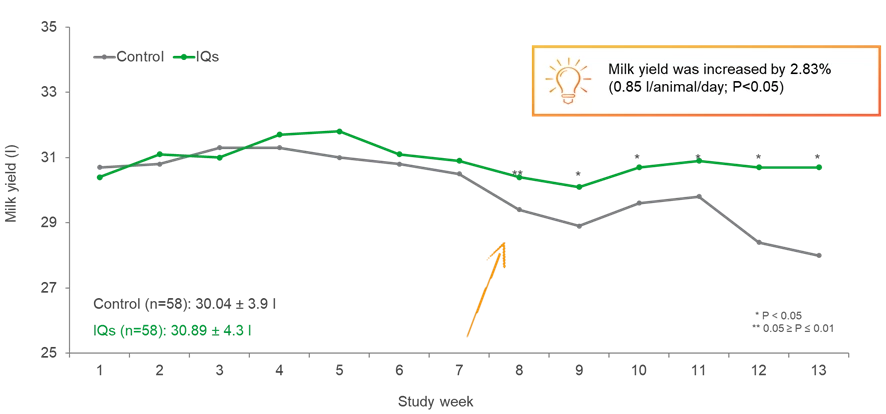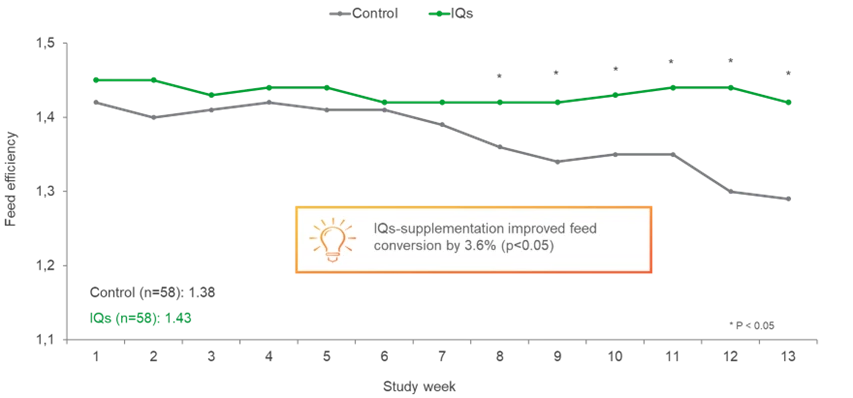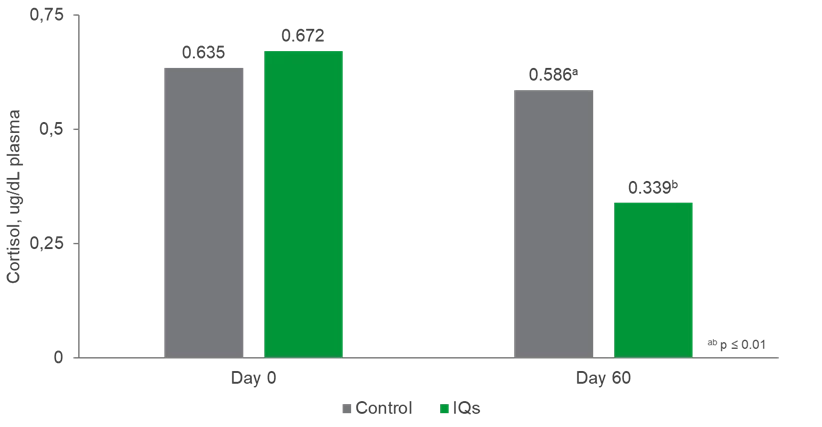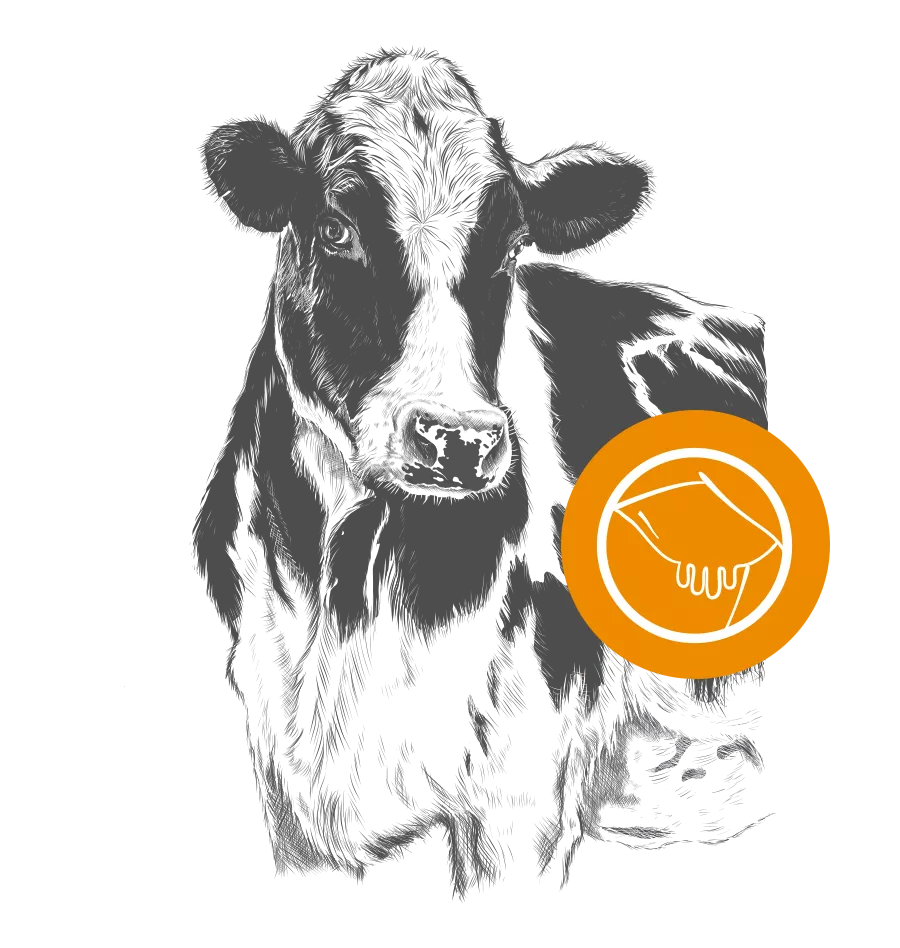Hot, hotter, alkaloids:
Environmental temperatures have increased by 1.0 °C since the 1800s. They are expected to increase by another 1.5 °C between 2030 and 2052. As a consequence of global warming, an increase of the frequency of hot days and heat waves is observed, leading to a higher risk of heat stress for farm animals. Heat stress results from the animal’s inability to dissipate sufficient heat to maintain homeothermy and is defined as the sum of internal and external forces that act on an animal to cause an increase in body temperature and evoke a physiological response.
Due to their high metabolic heat load, dairy cattle are very susceptible to heat stress. To alleviate the effects of heat stress, dairy cows automatically undergo a series of physiological responses in an attempt to maintain internal homeostasis.
The stress response leads to elevated levels of cortisol in the blood as well as an inflammatory response which in turn can have a negative impact on gut integrity. Seeking shade, increased water intake, drooling, a higher respiration rate and body temperature are effects to be observed in heat stressed dairy cows. But also a reduced dry matter intake and a lower frequency of rumination is seen, leading to a lower ruminal pH, an altered rumen function, and an increased risk of acidosis.
Reduced milk yield (and fat), lower pregnancy rates, more lameness and diseases are the consequence, leading to estimated economical losses of about $1,5 billion per year in the United States alone.
Offering shade on pastures and optimizing ventilation in the barn are measures to be taken to alleviate the impact of heat stress. Unlimited access to clean water and the use of misters and sprinklers are additional steps to make animals more comfortable. On the nutritional side, it has to be considered that the lower dry matter intake inevitably leads to a lower number of nutrients which are available for absorption. In addition, absorption efficiency is negatively impacted. Ruminally undegraded protein should be optimized and the balance between nutrient density on one hand and adequate fiber content and energy density on the other hand should be maintained. The use of electrolytes is recommended to stabilize the blood acid-base chemistry. In addition, feed additives can be implemented to further support dairy cows during heat stress periods.
Here, a standardized blend of isoquinoline alkaloids (IQs) has shown promising results already in broilers, swine, and ewes under heat stress conditions. IQs are known for their well-documented mode of action on inflammation and stress management.
To assess the effects of IQs supplementation on dairy cows under summer conditions, a field study was conducted in Italy and overseen by the University of Milan. The study started in June and lasted 13 weeks. 116 multiparous HF cows were enrolled in the study and divided into two groups (Control and IQs; n = 58), balanced by parity, days in milk, and total milk production of the previous lactation. The Temperature Humidity Index was calculated daily and indicated moderate heat stress for the trial period, with values between 70 – 77. IQs were added to the TMR of the treatment group (12 g Sangrovit® Feed / head / day). A routine analysis of the TMR (same TMR used in both groups) revealed that the TMR was contaminated with DON, indicating mycotoxicosis. As heat stress has a negative impact on the gut integrity, higher amounts of mycotoxins can reach the bloodstream and cause additional health issues, such as lameness, mastitis, and fertility.
On average, IQs supplementation led to a significant (p ≤ 0.05) increase in milk yield by 2.8% (Figure 1). The effect became more pronounced after a trial period of eight weeks. No differences were observed for feed intake and body condition score between both groups, resulting in a significantly improved feed efficiency in animals fed IQs (Figure 2). Again, this effect became more pronounced after a trial period of eight weeks. No changes were seen for milk components between both groups but a trend for reduced somatic cell counts in the groups fed IQs (-28%, p = 0.06). Plasma cortisol levels were assessed at the beginning of the trial and after 60 days. While no differences were seen at the beginning of the study, significant lower cortisol levels were measured in the IQs-supplemented group, indicating a lower stress response (Figure 3). While lameness was observed in 24% of the cows on the control group, a significant lower number of animals was lame in the IQs group (10%). Also, the number of lameness which had to be treated with antibiotics was significantly reduced in the IQs-supplemented group (6.9% vs. 0%, respectively). As a consequence, a return of investment of 5.5 could be realized in the IQs group. For optimal efficiency, IQs should be given an adaptation period of minimum 6, preferably 8, weeks.
Hot days and heat waves will occur more often in the future and trigger heat stress in dairy cows. Husbandry and nutritional actions need to be taken to diminish the animals’ discomfort and secure performance and health.
Actual data showed that IQs improved the resilience of dairy cows to elevated higher ambient temperatures in combination with a DON-contaminated TMR and can therefore contribute to a concept that achieves both: elevated animal welfare and a stable production.
Figure 1: Effect of IQ on milk yield.

Highlights:
Milk production increased by 2.83% (0.85 L/animal/day; P<0.05).
Figure 2: Effect of IQ on feed efficiency.

A destacar:
La suplementación con IQ mejoró la conversión del pienso en un 3,6% (p<0,05)
Gráfico 3: Efecto de los IQ en los niveles plasmáticos de cortisol.


About the author
Dr. Anja Pastor did her PhD in broiler nutrition. At Phytobiotics, she is part of the Sangrovit® product mangement, focusing on applications in poultry by defining market needs and supporting these needs with scientific research. Anja enjoys sharing her enthusiasm about poultry with others, for example, when giving technical trainings or attending scientific conferences.

